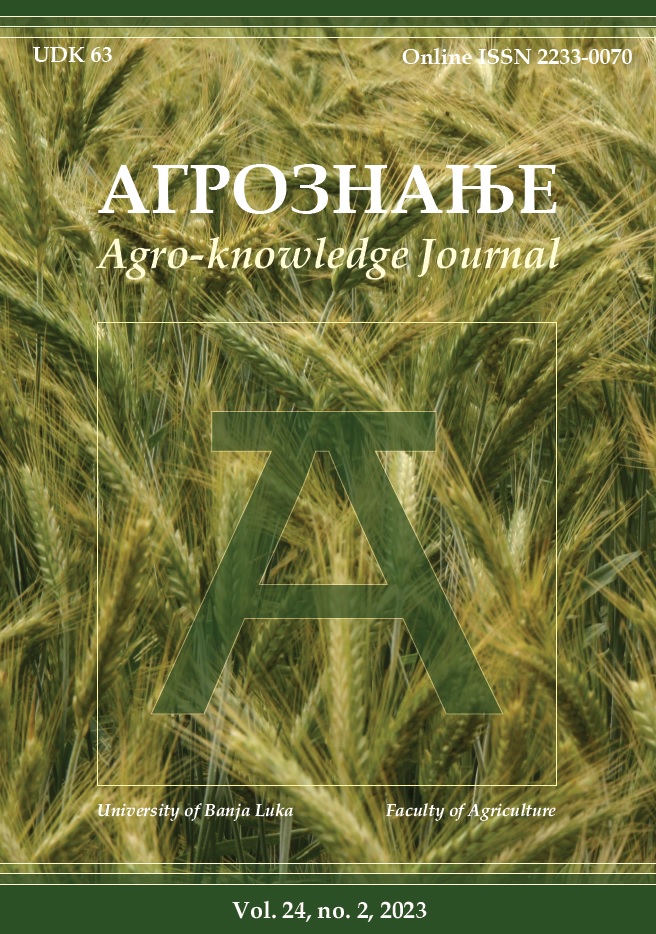The role of photosynthetic pigments in the leaf of maize inbred lines in improving photosynthetic efficiency
DOI:
https://doi.org/10.7251/AGREN2304221RAbstract
Methods of absorption and Raman spectroscopy were applied in this study to analyze functions and amounts of photosynthetic pigments in the leaf of maize inbred lines (M1-3-3Sdms, ZPPL186, and ZPPL225). Absorption spectroscopy was used to determine the dynamics of biosynthesis of chlorophyll a, chlorophyll b, and carotenoids. Raman spectroscopy was used to present the dynamics of biosynthesis of carotenoids and other compounds in terms of origin and kinetic form of the formation of spectra with all spectral bands. Organic molecules and compounds causing the formation of certain spectral bands in the Raman spectrum (carotenoids, phosphates, glycogen, amid III, and others) were determined. Conformational and functional changes of photosynthetic pigments in the leaves of the maize inbred lines, which occur due to changes in the ratio (quotient), were analyzed. The ratios (quotients) obtained indicate different contributions of valence oscillations of their chemical bonds, which inevitably alter the conformation of molecules and compounds. The results presented for the overall study point to minor biogenic differences among the maize inbred lines under study.

